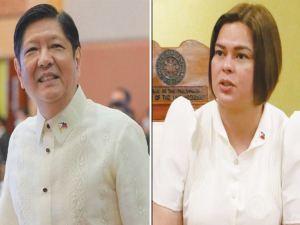It’s the end of the road for the country’s iconic jeepney.
Beginning next week, the Department of Transportation (DOTr) will remove jeepneys that are at least 15 years old from streets as part of the government’s transport modernization program.
DOTr Undersecretary Thomas Orbos yesterday said they would start taking out the “problematic” jeepneys beginning January – the start of a three-year transition period.
Orbos stressed they could not physically remove all old jeepneys from the road at the same time but over three years, or until 2021.
He said the DOTr will launch the Motor Vehicle Inspection System (MVIS) to determine the age of a jeepney and its roadworthiness.
Under the government’s modernization program, jeepneys 15 years and older will be replaced by electric-powered or Euro 4 compliant vehicles.
Euro 4 is a set of emission standards on particulate matter, carbon monoxide, nitrogen oxides and hydrocarbons.
The venerable jeepney, an icon of the post-war era, is powered by Euro 2-compliant engines.
Other proposed specifications for the improved public vehicles include closed-circuit television cameras, a GPS navigation system, automatic fare collection system, dash cameras and Wi-Fi.
The PUV modernization program seeks to phase out old and dilapidated jeepneys and replace them with high-quality transport systems that are environment-friendly and have greater capacity.
The program was officially launched on June 19. It is also seen as a solution to decongest the traffic-choked streets of the country’s urban areas.
Financial assistance
Transportation Secretary Arthur Tugade said the jeepney modernization program is “not-anti poor.”
Tugade said the program is not designed to phase out the jeepney or the business but to guarantee its profitability.
The government, under the Development Bank of the Philippines’ Program assistance to Support Alternative Driving Approaches (PASADA), promised to provide assistance amounting to P1.5 billion to transport firms and cooperatives to purchase new PUVs.
PASADA’s key features are the five-percent equity for vehicle purchase, six-percent interest rate and seven-year repayment period.
The eligible borrowers of the program include transport companies and cooperatives which have been qualified to receive franchise under the Omnibus Franchising Guidelines.
Heavier traffic by next year
Expect heavier traffic in 2018, especially in Metro Manila, as the government begins its massive infrastructure projects, Orbos said.
Orbos said they will start constructing all of the infrastructure projects in 2018, which will cause heavy traffic until the end of Duterte’s term.
“So many projects next year, which is part of the building program… they will all start simultaneously until the end of the term of the President,” Orbos said.
“In order for us to have better infrastructure, we need to go through this heavy traffic, which will start next year… Just remember we will all benefit from it,” he said.
Orbos said they will start constructing the Light Rail Transit Line 1 (LRT1) Cavite extension, the Light Rail Transit Line 2 (LRT2) East extension, Metro Rail Transit Line 7 (MRT7) and the North Luzon Expressway (NLEX) Harbor Link Segment 10 in Caloocan City and several bridges in Metro Manila.
He said most affected by the traffic is the entire stretch of EDSA.
With the looming horrendous traffic, Orbos, who is also the general manager of the Metropolitan Manila Development Authority (MMDA), appealed for understanding as he emphasized the problem is part of the long-term solutions to the traffic.
“There are already corresponding actions of the government to address this not in terms of traffic decongestion, but we are looking at permanent solutions in the long run,” he said.
For the meantime, the public should be more patient, he said.
by: R. Ramirez, PS








